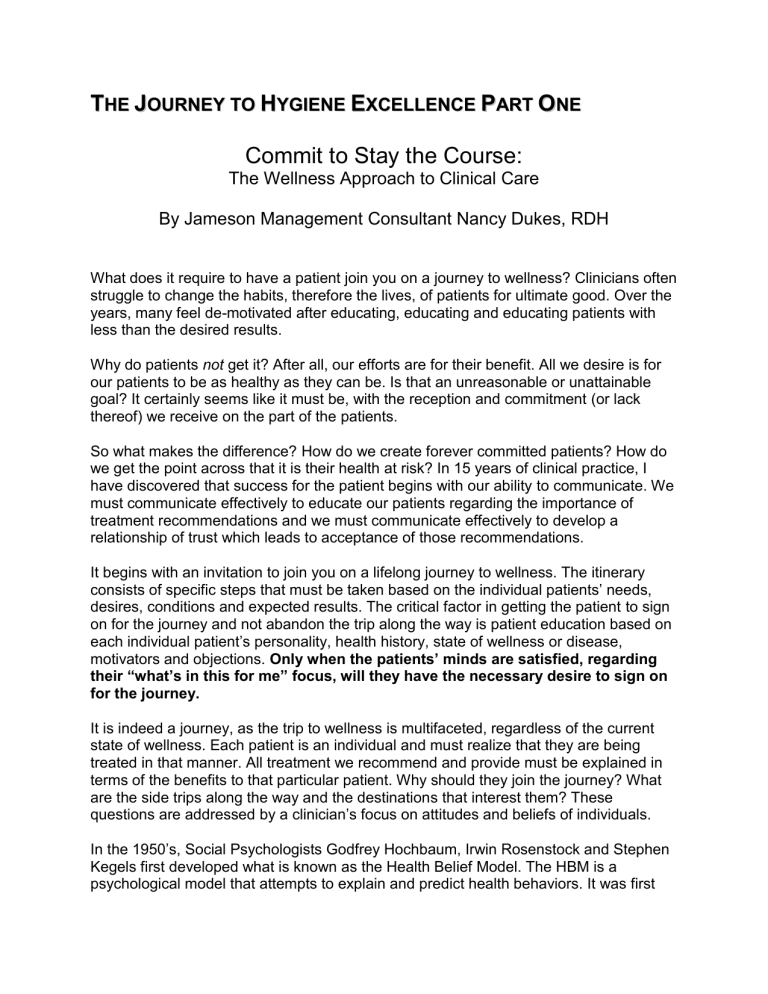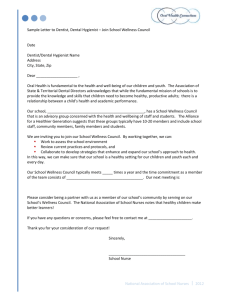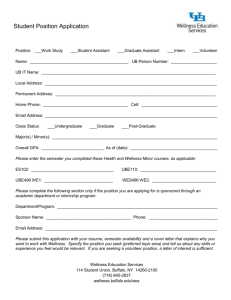the journey to hygiene excellence part i

T H E J O U R N E Y T O H Y G I I E N E E X C E L L E N C E P A R T O N E
Commit to Stay the Course:
The Wellness Approach to Clinical Care
By Jameson Management Consultant Nancy Dukes, RDH
What does it require to have a patient join you on a journey to wellness? Clinicians often struggle to change the habits, therefore the lives, of patients for ultimate good. Over the years, many feel de-motivated after educating, educating and educating patients with less than the desired results.
Why do patients not get it? After all, our efforts are for their benefit. All we desire is for our patients to be as healthy as they can be. Is that an unreasonable or unattainable goal? It certainly seems like it must be, with the reception and commitment (or lack thereof) we receive on the part of the patients.
So what makes the difference? How do we create forever committed patients? How do we get the point across that it is their health at risk? In 15 years of clinical practice, I have discovered that success for the patient begins with our ability to communicate. We must communicate effectively to educate our patients regarding the importance of treatment recommendations and we must communicate effectively to develop a relationship of trust which leads to acceptance of those recommendations.
It begins with an invitation to join you on a lifelong journey to wellness. The itinerary consists of specific steps that must be taken based on the individual patients’ needs, desires, conditions and expected results. The critical factor in getting the patient to sign on for the journey and not abandon the trip along the way is patient education based on each individual patient’s personality, health history, state of wellness or disease, motivators and objections. Only when the patient s’ minds are satisfied, regarding their “what’s in this for me” focus, will they have the necessary desire to sign on for the journey.
It is indeed a journey, as the trip to wellness is multifaceted, regardless of the current state of wellness. Each patient is an individual and must realize that they are being treated in that manner. All treatment we recommend and provide must be explained in terms of the benefits to that particular patient. Why should they join the journey? What are the side trips along the way and the destinations that interest them? These questions are addressed by a clinician’s focus on attitudes and beliefs of individuals.
In the 1950’s, Social Psychologists Godfrey Hochbaum, Irwin Rosenstock and Stephen
Kegels first developed what is known as the Health Belief Model. The HBM is a psychological model that attempts to explain and predict health behaviors. It was first
developed as a result of research to understand why individuals did not participate in a health screening program. Since this time, the lessons learned have been used to teach various health care professionals to apply the basic principles in clinical practice. It may be that this model holds the key to affecting behavioral changes of patients which will result in healthier lifestyles.
HBM is based on the idea that an individual must have a willingness to participate in health interventions and believe that being healthy is a highly valued goal. It concludes that it is possible to predict whether an individual will change behaviors by understandin g the individual’s perception of the disease, identifying motivating factors for that particular individual and predicting the likelihood that the individual will take some action. It has been discovered that the most influential factor that might prevent an individual from engaging in healthier behaviors is the perceived barriers in the mind of the patient. It was not the opinions of the healthcare provider, but the perception of the patient that was most important.
In dentistry, as a result of patient surveys, the ADA has identified four basic reasons or barriers to seeking dental care. The barriers, according to patients surveyed, were cost, lack of perceived need, time and fear of the dentistry itself. The exciting part about this knowledge is that, once identified, any one or all of these barriers can be overcome.
Understanding and utilizing this psychological model in our patient education program may very well be the key to engaging greater numbers of patients on the journey to wellness. The following components of the Health Belief Model must be understood and utilized in patient education.
Perceived Susceptibility
Perceived Severity
Importance (personalized risks)
Risks (consequences involved in continued current behavior)
Perceived Benefits
Perceive Barriers
Cues to Action
Effects/results one can expect
What are the costs in time, money and effort
Preparations necessary for change (how to instruction)
Self-Efficacy Confidence and commitment in one’s ability to be successful
For behavior change to take place and succeed patients must: a. Feel threatened by their current behavioral patterns (lack of dental care), b. Believe that a specific change will be beneficial (expected results of treatment), and
c. Trust that this valued outcome will result at an acceptable cost
(comfortable financial arrangements, time and effort commitment required).
The patient must see themselves as competent (self-efficacious) to implement the change. A patient must have moved through the HBM to a state of readiness for treatment and commitment. They must desire to join the journey to wellness. Taking each and every patient through this cycle to a state of readiness becomes our goal as clinicians if we are to achieve the level of success we desire for our patients. In order to assist patients to move through this process into a state of readiness, clinicians must educate patients with effective communication addressing the following factors.
1. Personalized risks of periodontal or dental disease
2. The consequences of compromised oral health for their total body health
3. Recommended patient actions and resulting individual benefits
4. How barriers or objections can be reduced or eliminated
5. How they can make the necessary changes
6. How we can train, guide and support them to achieve success
All six steps must be understood by the clinician and the patient from the patient’s perspective . It is this individualized understanding through the eyes of the patient that allows us to empower our patients to join us on a journey resulting in healthier lifestyles, thus wellness.
Patient education, rooted in communication skills and coupled with understanding of human behavior makes the difference. The journey to wellness can become a WOW adventure for all, patient and clinician alike.
Jameson Management , Inc.’s Nancy Dukes, BA, RDH, invites you to expand your horizons in the area of patient motivation by joining in a series of articles to discover the keys that will enable you to book more passengers than ever imagined on the journey to wellness. The Journey to Hygiene Excellence will not only this Wellness Approach to Clinical
Care article, but features on Comprehensive Health Evaluation;
Systemizing Your Data Collection and Documentation; Treatment
Planning and ADA Coding; Building Relationships of Trust through Effective Patient
Education; Case Presentation and Treatment Acceptance; and Building Retention and
Referrals while Offering a Healthy New Patient Flow. Dukes is director of clinical consulting for Jameson Management, Inc., an international dental practice management consulting firm. Visit www.jamesonmanagement.com
and call
877.369.5558 for more information.









![[subject line] You're invited to share the health](http://s3.studylib.net/store/data/008613453_1-c65c31d0738aa28772fa551d6f3e1bcf-300x300.png)